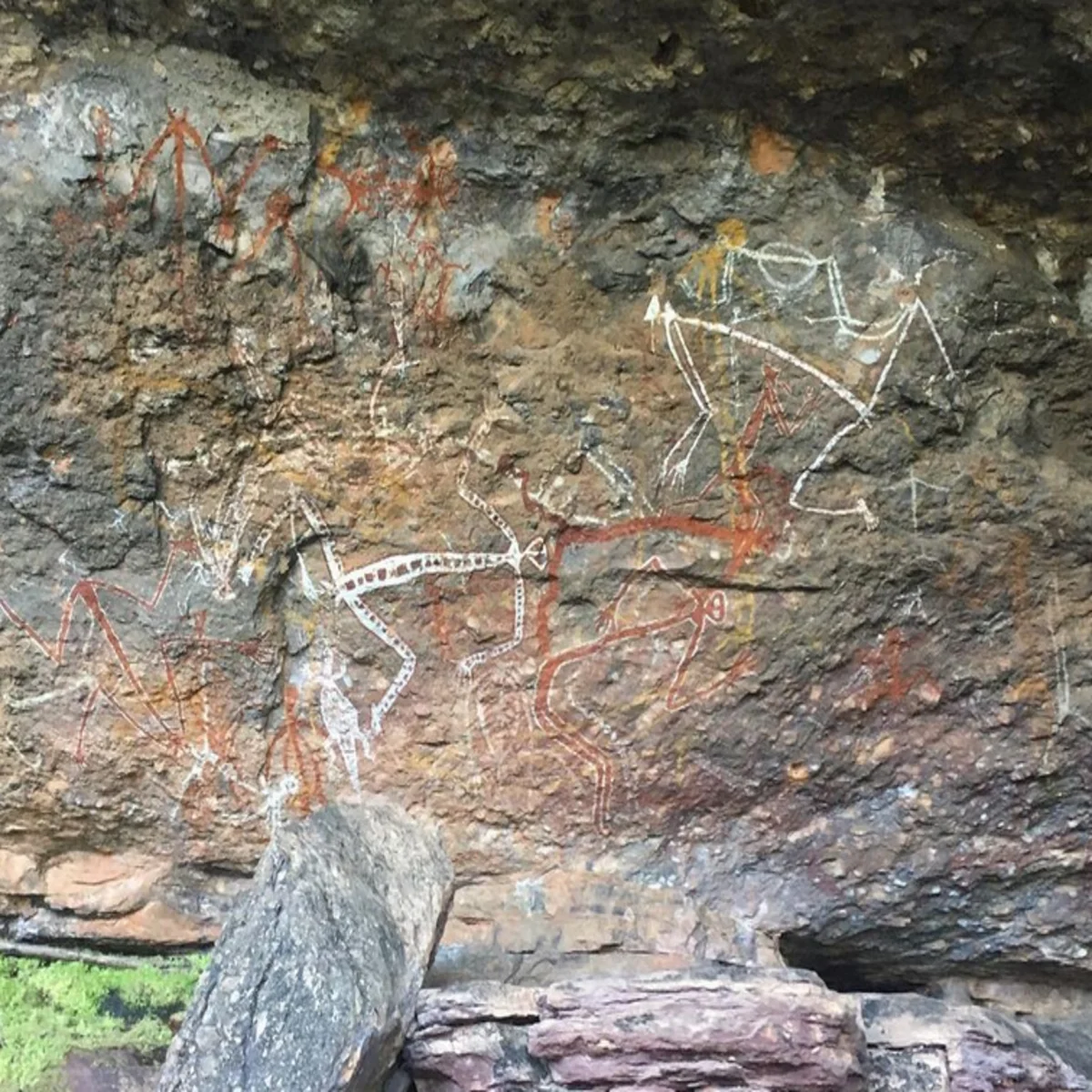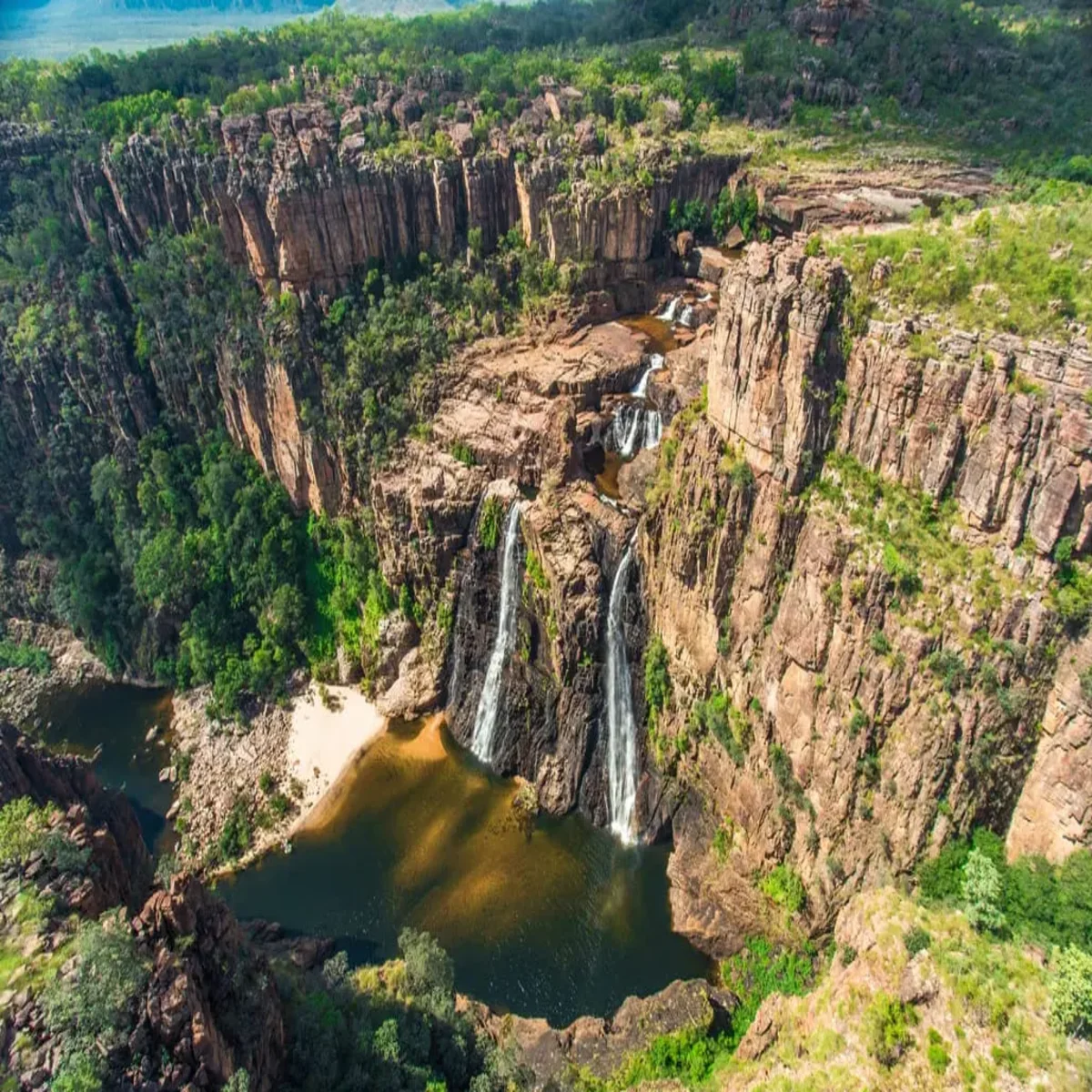The rock art in Kakadu holds significant international value.

The park contains many rock art sites, with some paintings dating back as far as 20,000 years, making it one of the longest historical records of any group of people on Earth.
The paintings depict Aboriginal life spanning thousands of years, highlighting the strong connection between Bininj/Mungguy and their land and spiritual traditions.
The main rock art galleries are at Ubirr and Burrungkuy (Nourlangie). Visitors can expect to see naturalistic paintings of animals, traditional X-ray art, and depictions of early contact with European people.
Culture
The Aboriginal word for rock art is 'kunbim'.
In Bininj/Mungguy culture, art serves to express cultural identity and connection to the country. The act of painting holds greater significance than the final product, leading to older paintings being overlaid by newer ones.
Bininj/Mungguy use painting to preserve their cultural stories, with current mediums including bark, paper, and canvas.
Types of rock art
Rock art remains significant to local Aboriginal people as it depicts objects, animals, and activities that are still part of their daily lives.
The rock art in Kakadu was created for various purposes.
Certain paintings, such as those related to sorcery or creation ancestors, required specific knowledge and expertise to create.
Paints
Bininj/Mungguy ancestors made paint by crushing pigments on a stone palette and mixing them with water. They used brushes from human hair, reeds, feathers, and chewed sticks. Occasionally, they would blow wet pigments around objects using their mouths to create a stencil. Hand stencils like these can be found at Ubirr and Nanguluwurr.
Haematite, a reddish iron oxide paint, is known for its longevity, which is why many old paintings today are predominantly red.
Burrungkuy (Nourlangie)
The local Aboriginal community's history and lifestyle in this area have been traced through rock art and archaeological evidence, showcasing environmental and social changes over thousands of years.
These three main sites include Burrungkuy (Nourlangie), Kunwarddewardde Lookout, and Anbangbang Shelter.
Visitors can explore creation ancestors, such as Namarrgon and the Lightning Man, at the leading rock art site of Anbangbang Gallery.
Aboriginal people historically inhabited this area during the wet seasons, gathering a diverse range of plants and animals for sustenance.
The flat rocks in the shelter contain grinding holes likely used for food preparation and potentially for grinding ochres for painting.
Disabled individuals can easily access the main gallery, while other art and occupation sites require navigating flights of steps.
Nanguluwurr
The Nanguluwurr Gallery, located on the northern side of Burrungkuy (Nourlangie), is a rock art site that offers a historical experience at the end of a 1.7 km walk.
This artwork features ancestral spirits, animals, and an early depiction of contact between Aboriginal people and Europeans in the form of a two-masted sailing ship with an anchor chain.
This area has been a significant camping site for Aboriginal people for millennia, as it is located on the main walking route from the Escarpment Country to the South Alligator floodplain.
The paintings encompass various styles and subjects, including ancient hand stencils and x-ray-style depictions of animals, with some dating back to the 1960s.
Ubirr
Ubirr is known for its exceptional rock art and is a significant factor in Kakadu's dual World Heritage status.
The paintings depict early human interactions with the environment, with some galleries showing the first interactions with non-Aboriginal people.

X-ray art
The x-ray paintings in this gallery depict wildlife and food sources from the freshwater period in the last 1,500 years around Ubirr, including fish, waterfowl, mussels, wallabies, goanna, echidnas, and yams.
Contact art
The main gallery features curious examples of contemporary art. One painting depicts a man wearing a shirt and boots with his hands in his pockets, likely representing an early buffalo hunter from the 1880s.
Tasmanian tiger
A painting of a thylacine (Tasmanian tiger), believed to have gone extinct on the mainland 2,000-3,000 years ago, is located near the main gallery.
Creation
Ancient creation figures, such as the Rainbow Serpent, left their mark on the rocks at Ubirr to signify their significance to the people.
During the tropical summer, visitors can access Ubirr by floating across the flooded Magela Creek on the Guluyambi boat cruise.
We recommend Kakadu tours if you are interested in ancient Aboriginal rock paintings. The guides will explain everything in detail and show you the artworks depicted through the ages.